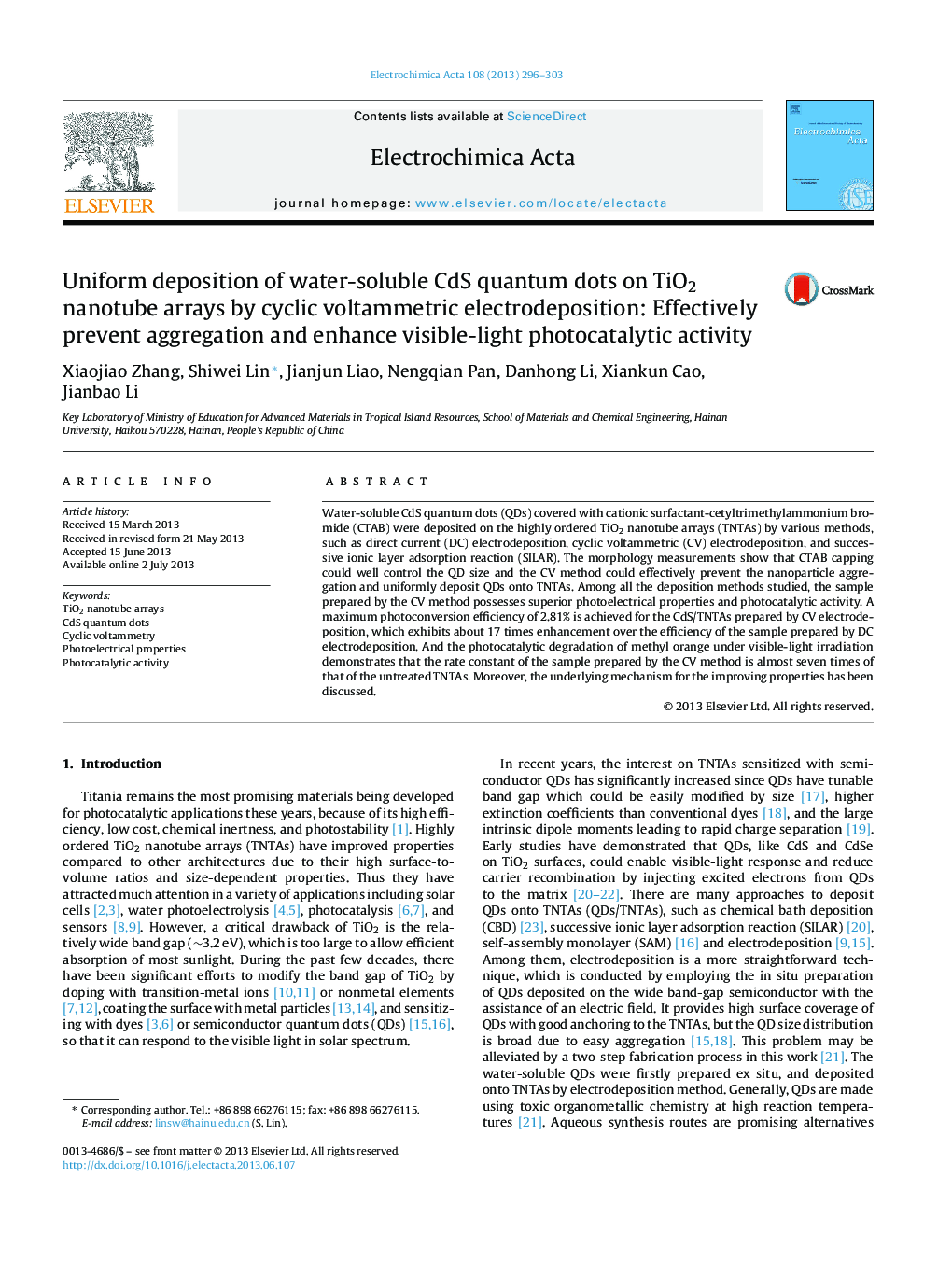| Article ID | Journal | Published Year | Pages | File Type |
|---|---|---|---|---|
| 186802 | Electrochimica Acta | 2013 | 8 Pages |
•Water-soluble CdS QDs were deposited on the TNTAs by DC electrodeposition, CV electrodeposition, and SILAR.•The CV method could effectively prevent the aggregation and uniformly deposit CdS QDs onto the TNTAs.•The CTAB/CdS/TNTAs prepared by the CV method exhibited superior photoelectrical properties and photocatalytic activity.
Water-soluble CdS quantum dots (QDs) covered with cationic surfactant-cetyltrimethylammonium bromide (CTAB) were deposited on the highly ordered TiO2 nanotube arrays (TNTAs) by various methods, such as direct current (DC) electrodeposition, cyclic voltammetric (CV) electrodeposition, and successive ionic layer adsorption reaction (SILAR). The morphology measurements show that CTAB capping could well control the QD size and the CV method could effectively prevent the nanoparticle aggregation and uniformly deposit QDs onto TNTAs. Among all the deposition methods studied, the sample prepared by the CV method possesses superior photoelectrical properties and photocatalytic activity. A maximum photoconversion efficiency of 2.81% is achieved for the CdS/TNTAs prepared by CV electrodeposition, which exhibits about 17 times enhancement over the efficiency of the sample prepared by DC electrodeposition. And the photocatalytic degradation of methyl orange under visible-light irradiation demonstrates that the rate constant of the sample prepared by the CV method is almost seven times of that of the untreated TNTAs. Moreover, the underlying mechanism for the improving properties has been discussed.
Graphical abstractFigure optionsDownload full-size imageDownload as PowerPoint slide
